AI is reshaping customer onboarding in SaaS by making the process faster, more personalized, and scalable. Traditional methods like manuals and training sessions often fail to meet user expectations for immediate value. AI tools solve this by automating tasks, tailoring experiences, and providing 24/7 support. Here’s a quick look at some top tools:
Each tool has strengths and limitations, so your choice should align with your onboarding challenges. For example, My AI Front Desk is ideal for real-time communication, while Userpilot and Appcues excel at in-app guidance. Budget-friendly options like UserGuiding or Product Fruits are great for smaller teams, and Customer.io is best for advanced messaging workflows.
Quick Comparison:
| Tool | Best For | Key Features | Drawbacks |
|---|---|---|---|
| My AI Front Desk | Real-time communication | AI voice, 24/7 support, workflow automation | Limited to phone/text support |
| Userpilot | In-app guidance | Behavioral analytics, A/B testing | Complex setup, higher cost |
| UserGuiding | Simplicity | No-code workflows, basic automation | Lacks advanced AI features |
| Appcues | Personalization | Smart targeting, segmentation | Expensive for large teams |
| Product Fruits | Budget-friendly guidance | Tooltips, interactive checklists | Limited integrations |
| Customer.io | Multi-channel messaging | Automated workflows, API integrations | Requires technical expertise |
AI onboarding tools can cut time-to-value by up to 50%, improving user satisfaction and reducing workload for teams. Choose a tool that fits your needs - whether it’s real-time support, in-app guidance, or communication automation.
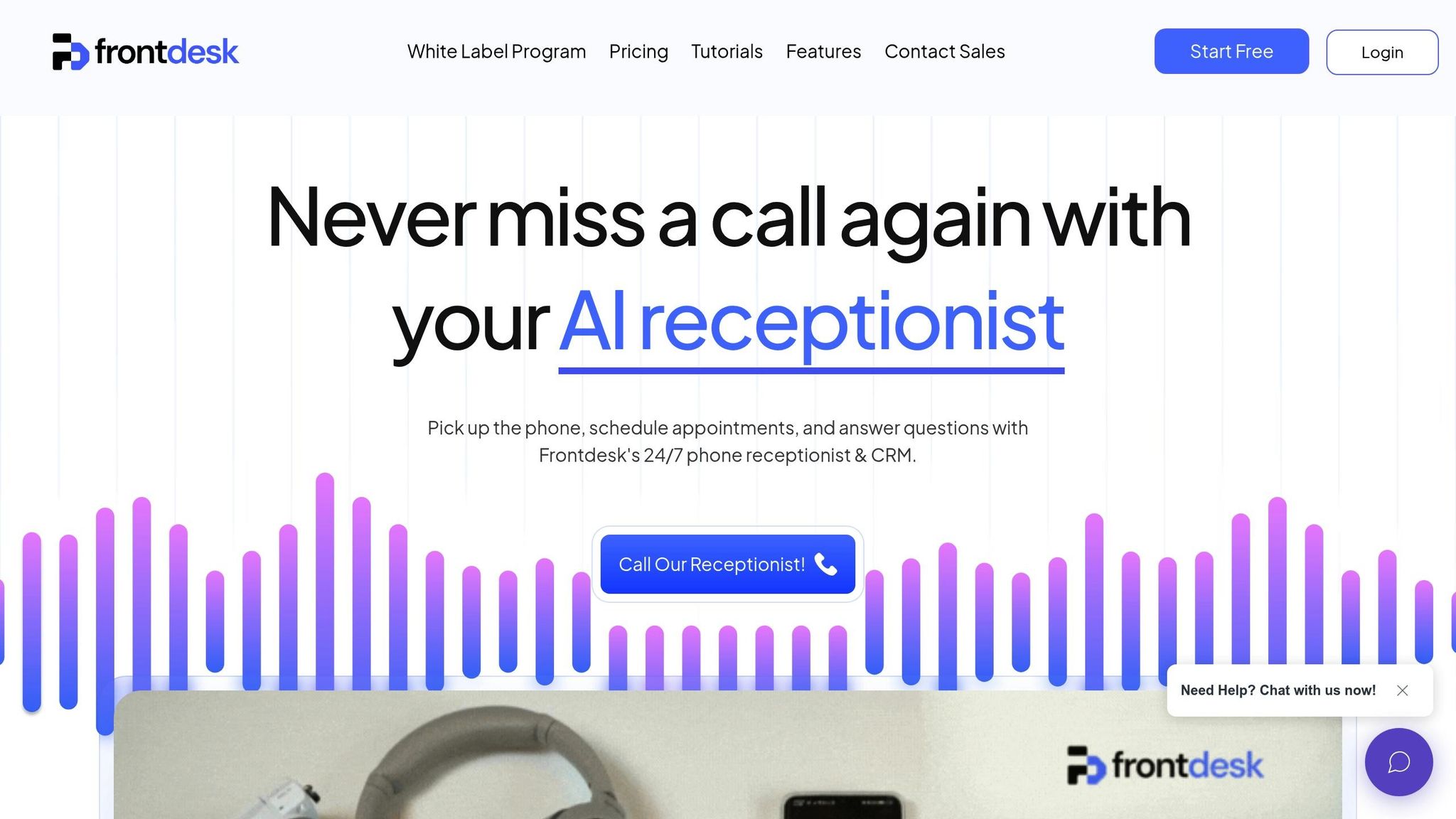
My AI Front Desk is a voice-first AI platform designed to capture and convert leads through phone interactions. Unlike traditional tools that focus on guiding users within apps, this solution takes charge of the crucial initial interaction with potential customers.
Powered by advanced models like GPT-4, Claude, and Grok, along with a library of over 100 customizable voices, this platform delivers natural and brand-aligned conversations. It handles unlimited simultaneous calls with real-time processing, ensuring no customer ever hears a busy signal. With multi-language support, businesses can easily connect with international clients, while pronunciation guides ensure the AI can handle unique business names or industry-specific terms accurately.
The platform also features AI-powered voicemail, which transcribes messages and notifies the appropriate team members for quick follow-up. Additionally, the auto hangup feature ensures calls end smoothly when necessary, maintaining a polished and professional tone.
My AI Front Desk simplifies workflows with texting capabilities that send contextual messages during calls. For instance, if a caller inquires about pricing, the AI can instantly text them a pricing sheet while the conversation continues.
With post-call webhooks and notifications, specific actions can be triggered based on the call's outcome. If a caller expresses interest in a demo, the system can automatically create a lead record, schedule a follow-up, and notify the sales team.
The platform also includes intake form workflows to collect detailed information from callers, streamlining data collection. API workflows enable real-time interactions with external systems, such as pulling up customer details or updating records during the call.
Thanks to Zapier integration with over 9,000 apps, My AI Front Desk fits seamlessly into existing workflows. It integrates with Google Calendar to schedule appointments during calls in real time.
The CRM integration organizes leads automatically, syncing customer data with existing sales processes. The platform supports call forwarding to retain existing phone numbers and offers new number provisioning for businesses requiring dedicated AI-powered lines.
Additional features like extension digits allow compatibility with traditional phone menu systems, while area code selection helps maintain a local presence in specific regions.
To make adoption easy, the platform offers 200+ free minutes per month (equivalent to about 170–250 calls), making it an excellent option for small businesses to test without high upfront costs. The active times control ensures the AI operates only during business hours, with smooth handoff options for after-hours inquiries.
Tools like call recordings, shareable links, and an analytics dashboard provide insights to improve onboarding. Link tracking monitors engagement with shared materials, helping businesses see which resources are most effective in guiding customers through the onboarding process. This data can highlight friction points and improve customer interactions.
For agencies and larger companies, the white-label program includes features like Stripe rebilling for flexible billing, feature gating to manage client access, and 24/7 technical support. This allows businesses to offer branded AI receptionist services to their clients while maintaining full control over the customer experience.
These features lay the groundwork for comparing My AI Front Desk with other leading onboarding solutions.
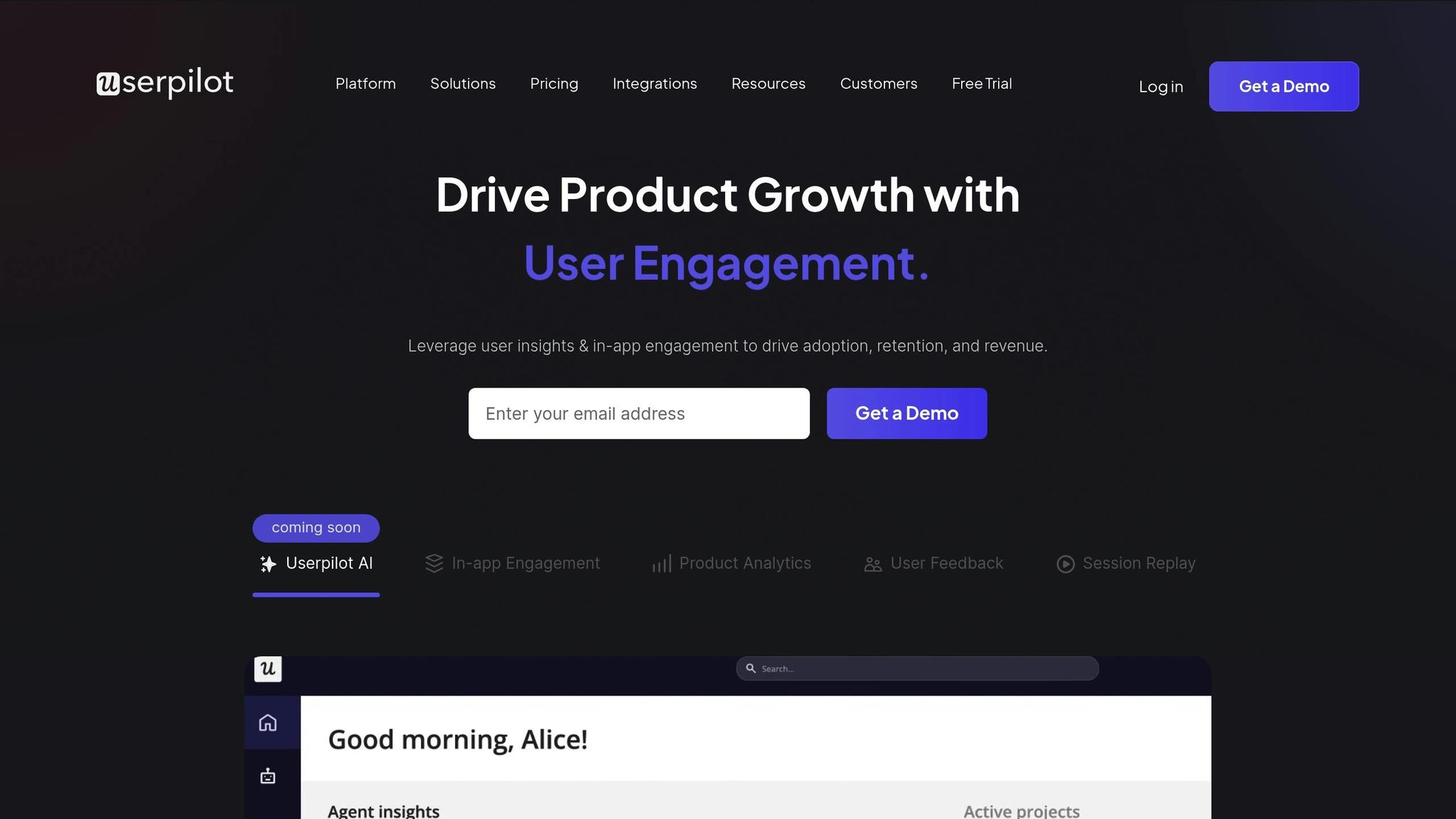
Userpilot is part of a suite of AI tools designed to speed up onboarding by focusing on enhancing in-app user experiences. It helps create guided user journeys within SaaS applications, ensuring users can navigate features effectively once they’re inside the app. With a strong in-app foundation, its AI features take onboarding to the next level.
Userpilot uses AI-powered analytics to track user behavior and predict potential challenges during onboarding. By analyzing interactions, it suggests the best onboarding flows to improve user engagement.
The smart targeting feature identifies the perfect timing for displaying tooltips and modals, ensuring users aren’t overwhelmed with too much information at once.
Additionally, the platform offers AI-driven content recommendations, suggesting help articles, tutorials, or next steps based on where users are in the app and their previous activity.
Userpilot’s AI capabilities enable personalized onboarding sequences tailored to factors like user roles, company size, or actions taken during signup.
The platform proactively assists when users stall. For instance, if a user hasn’t completed key actions within 48 hours, it triggers a tooltip or message to re-engage them.
Progress tracking automation ensures the onboarding experience adapts to each user’s pace. Those who move quickly through tasks might unlock advanced features sooner, while others who need more time receive extra guidance.
Userpilot integrates seamlessly with customer data and analytics tools like Segment and Amplitude, allowing for precise personalization during onboarding.
It also works with email marketing platforms like Intercom and HubSpot, enabling coordinated messaging. For example, completing an onboarding step in-app can trigger follow-up emails or update the user’s status in a CRM.
The platform includes a no-code builder, making it easy to test and refine onboarding flows quickly.
With A/B testing capabilities, teams can experiment with different onboarding strategies - such as tooltip placement or feature introduction sequences - and determine which approach drives better activation rates.
Userpilot offers detailed insights into onboarding drop-offs, pinpointing exactly where users abandon the process. This helps teams identify problem areas and fine-tune the most critical steps in the journey.
Its segmentation features allow for highly customized onboarding experiences. For example, enterprise users might receive different guidance than individual subscribers, ensuring the process aligns with their specific needs and expectations.
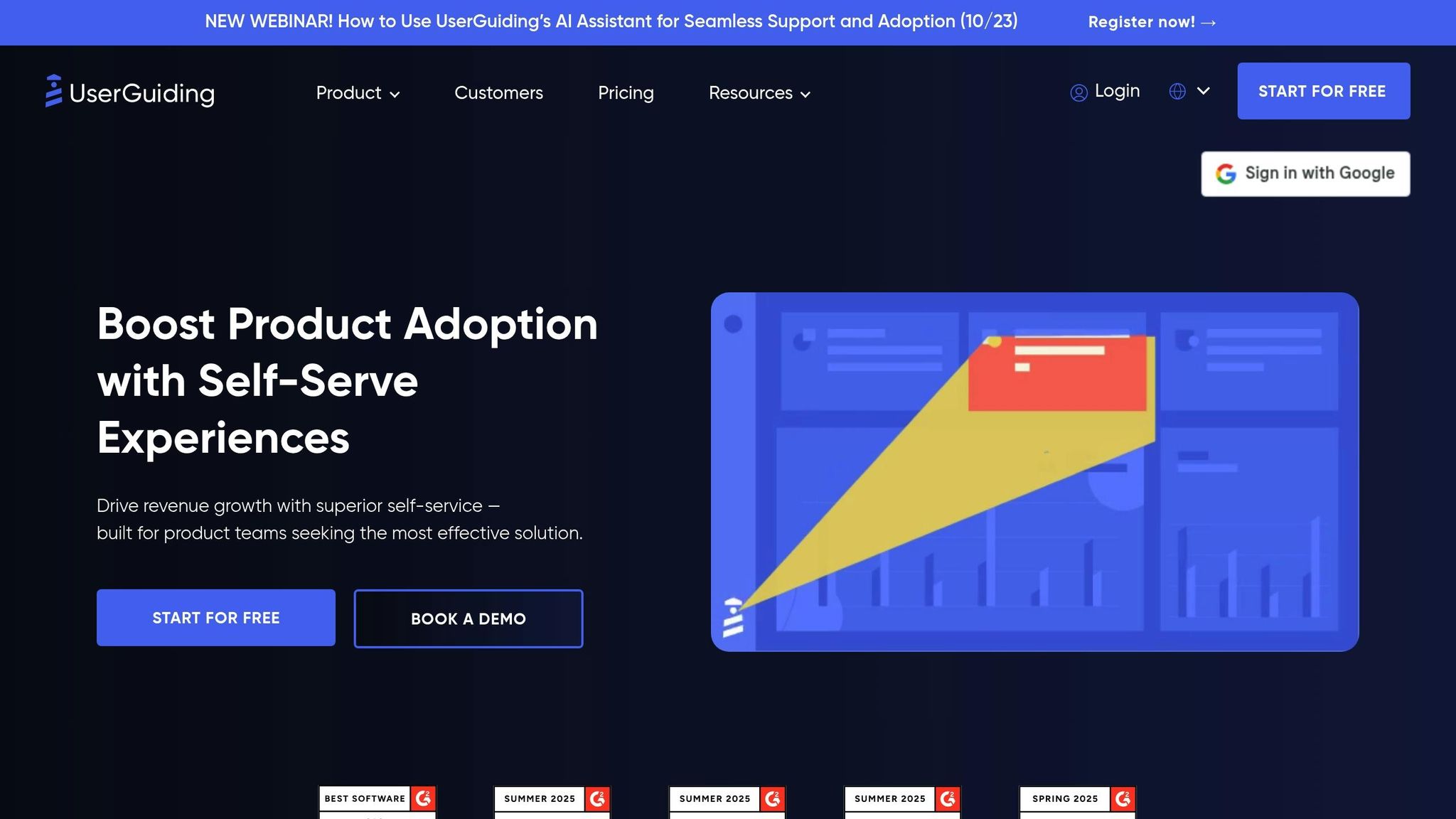
UserGuiding simplifies onboarding for SaaS products by offering interactive, no-code solutions. Its platform is designed to create guided tours, interactive walkthroughs, and contextual help systems that make it easier for new users to grasp essential features. These tools aim to deliver a smooth and engaging onboarding experience.
UserGuiding integrates seamlessly with popular tools like Salesforce, Google Analytics, Segment, and Amplitude. It also supports both outgoing and incoming webhooks, giving users the flexibility to connect with various platforms and tailor workflows to their specific needs.
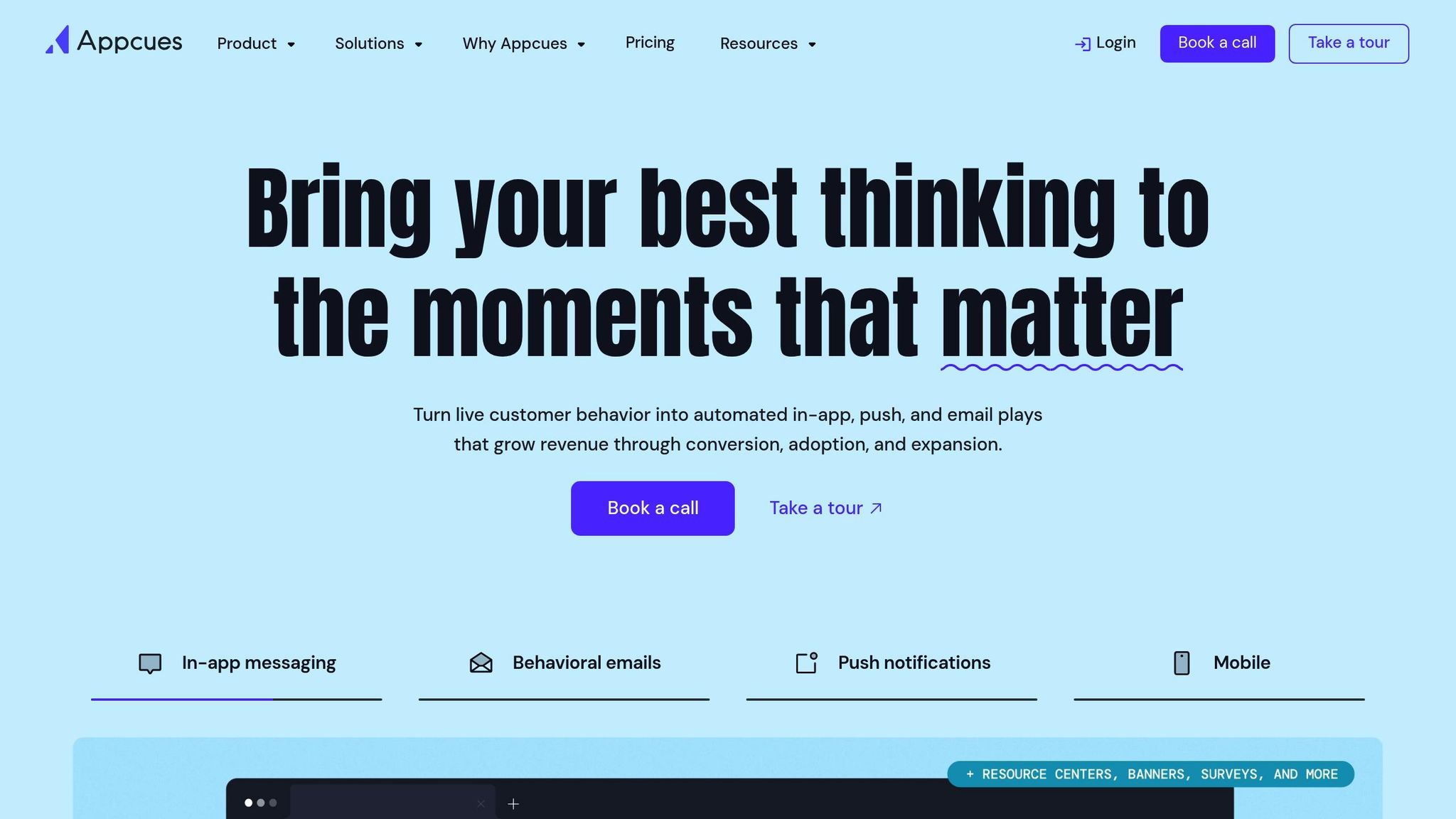
Appcues takes onboarding to the next level by focusing on personalized, in-app experiences. With features like guided product tours and contextual messaging, it helps SaaS companies shorten the time it takes for users to see value in their product. Instead of bombarding new users with too much information upfront, Appcues delivers the right guidance at the right time.
Appcues leverages machine learning to analyze user behavior and adjust onboarding flows automatically. This ensures that both individual users and enterprises receive guidance tailored to their specific needs, creating a more relevant experience.
What sets Appcues apart is its ability to trigger guidance during natural pauses in user activity. By using a smart targeting algorithm, the platform delivers onboarding messages at just the right moments, avoiding information overload and increasing completion rates. This intelligent automation also supports seamless integrations with other tools.
With Appcues, onboarding becomes a hands-free process. The platform automates event-triggered steps, such as launching new flows after actions like file uploads or team invitations. It also continuously tests different variants using A/B automation, optimizing performance without requiring manual adjustments.
Appcues integrates with top analytics tools like Mixpanel, Amplitude, and Google Analytics, making it easy to monitor onboarding performance alongside other metrics. It also works with customer support platforms such as Intercom and Zendesk, enabling smooth transitions when users need extra help.
For B2B SaaS companies, the Salesforce integration is a standout feature. It keeps lead records updated with onboarding progress, giving sales teams a clear view of where prospects are in their product journey. This insight allows for more strategic and informed follow-ups.
Appcues speeds up onboarding with features like progressive disclosure and goal-oriented flows. Progressive disclosure is particularly effective - it introduces features gradually as users become more familiar with the basics, reducing overwhelm and boosting confidence.
The platform’s goal-oriented flows help users achieve quick wins by focusing on specific outcomes. For instance, instead of walking users through every menu option, an onboarding flow might guide them through creating their first project or completing their initial setup. This targeted approach often leads to higher activation rates and faster results.
To further streamline the process, contextual help is provided right when users hit potential roadblocks. This just-in-time assistance keeps workflows smooth and minimizes drop-offs during onboarding.
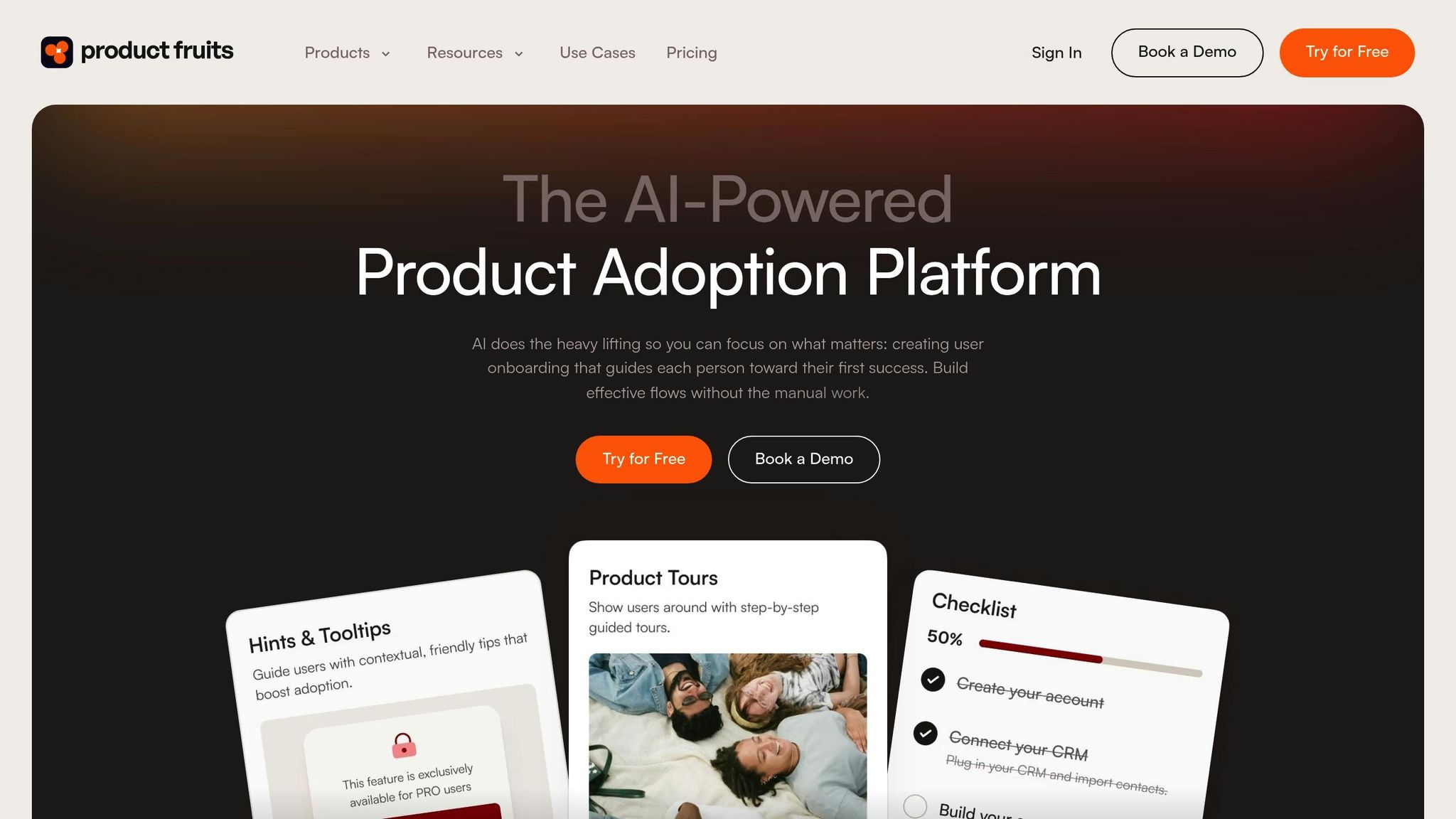
Product Fruits provides a no-code onboarding solution designed to quickly guide new users to success. Its flexible user journeys adapt to individual behaviors, making the onboarding process smoother and more effective.
The platform shines with its interactive product tours and contextual tooltips, which help users navigate software interfaces with ease. Unlike static onboarding materials, Product Fruits delivers a dynamic experience, ensuring users receive relevant guidance at every stage.
Product Fruits takes personalized onboarding to the next level by using AI to automatically tailor user experiences. Through smart segmentation algorithms, the platform categorizes users based on their behavior, role, and engagement patterns. This means every user type gets a customized onboarding experience without the need for manual adjustments.
With predictive analytics, the platform identifies users who may drop off during onboarding by analyzing their interaction patterns. Behavioral triggers, powered by machine learning, activate specific onboarding elements when users hit milestones or face potential challenges. This proactive approach helps eliminate obstacles and keeps users engaged.
The platform automates onboarding with event-driven workflows that respond to user actions. For instance, when a user completes their profile setup, the system automatically moves them to the next onboarding phase.
Using conditional logic, Product Fruits ensures users only see steps relevant to their needs or subscription tier. For example, enterprise users might receive advanced tutorials, while basic plan users focus on core features. This targeted approach reduces unnecessary information and improves completion rates.
Automated progress tracking keeps both users and teams informed. The system sends updates to internal teams and triggers follow-ups if users stall at specific steps. These workflows streamline the process, enabling faster user adoption.
Product Fruits helps users adopt new tools quickly with interactive checklists that break down tasks into smaller, achievable steps. These checklists show progress clearly and celebrate milestones, keeping users motivated.
The platform also uses hotspot highlighting to draw attention to important features without overwhelming users. This visual guidance ensures users can navigate dashboards and locate key tools easily.
With smart onboarding paths, Product Fruits adjusts workflows based on user responses and actions. For instance, if a user is migrating from another platform, the onboarding process highlights features that simplify the transition. This tailored approach helps users reach their goals faster.
Additionally, micro-interactions provide instant feedback when users complete tasks. These small confirmations boost confidence and maintain momentum, encouraging users to finish the onboarding journey with ease.
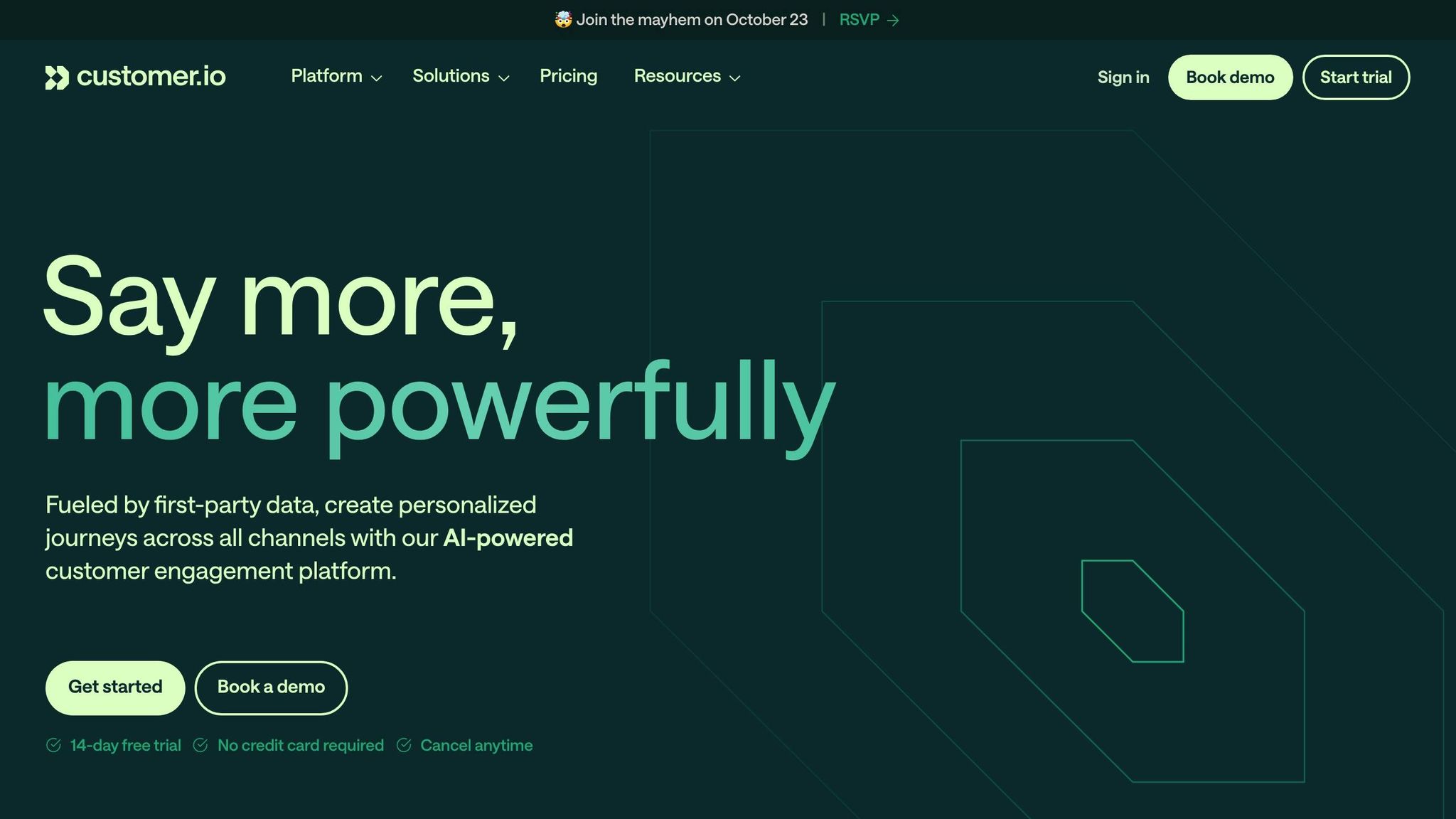
Customer.io is a messaging platform designed to simplify SaaS customer onboarding through automated and personalized communication. It uses data to track essential user actions - like signing up or engaging with specific features - and delivers real-time messages via email, SMS, or push notifications.
With its visual workflow builder, teams can easily set up automated onboarding sequences triggered by user behavior. This ensures new users get relevant messages exactly when they need them, without feeling bombarded.
Additionally, Customer.io integrates seamlessly with third-party tools using APIs and connectors like Zapier. This allows data to flow smoothly between marketing, analytics, and CRM platforms, creating a unified onboarding experience. By combining automation with well-timed, targeted messages, Customer.io enhances the overall onboarding process.
When it comes to SaaS customer onboarding, each tool brings its own set of strengths and challenges. Knowing these differences can help you pick the right solution for your needs and budget. Here's a closer look at what each tool offers - and where they might fall short.
My AI Front Desk is a standout for real-time communication. Its AI receptionists handle multiple calls simultaneously without delays and integrate with over 9,000 apps to streamline workflows. However, it’s primarily focused on phone and text support, lacking visual in-app guidance that some businesses might need.
Userpilot shines with its detailed in-app guidance and A/B testing capabilities, along with activation metrics to track progress. On the flip side, its complexity can be daunting for smaller teams, and costs can quickly rise as your user base expands.
UserGuiding offers a middle ground with easy implementation, reliable analytics, and basic customization that doesn’t require heavy technical expertise. That said, it doesn’t have advanced AI features, relying more on rule-based automation rather than intelligent responses.
Appcues is known for its robust segmentation and targeting, allowing highly personalized onboarding flows. Its visual editor makes it accessible for non-technical teams to create even complex workflows. However, it can become pricey for high-volume users, and some have reported occasional performance hiccups.
Product Fruits is a budget-friendly option, providing key features like hotspots, tooltips, and user feedback collection - ideal for smaller teams. The trade-off? It lacks advanced analytics and has fewer integration options compared to other tools.
Customer.io excels in orchestrating cross-channel messaging, coordinating emails, SMS, and push notifications based on user behavior. This approach speeds up user activation. Its downside is the significant setup time and technical know-how required to get started.
Here’s a summary of how these tools compare:
| Tool | AI Features | Workflow Automation | Integration Options | Onboarding Accelerators |
|---|---|---|---|---|
| My AI Front Desk | Advanced (GPT-4, Claude, Grok) | Zapier + 9,000 apps | Extensive API workflows | Real-time phone/text support |
| Userpilot | Moderate (behavioral triggers) | Visual workflow builder | Standard SaaS integrations | Interactive product tours |
| UserGuiding | Basic (rule-based) | Template-driven flows | Limited but essential | Simple onboarding checklists |
| Appcues | Moderate (smart targeting) | Advanced segmentation | Comprehensive analytics tools | Personalized user journeys |
| Product Fruits | Basic (feedback analysis) | Simple automation rules | Core integrations only | Essential guidance elements |
| Customer.io | Strong (predictive messaging) | Automated triggers | Extensive third-party APIs | Multi-channel communication |
The best choice depends on what’s holding back your onboarding process. For example, if customers have trouble reaching your team during setup, My AI Front Desk offers 24/7 availability to address that directly. For in-app guidance, Userpilot or Appcues provide robust solutions. Teams on a tighter budget might prefer UserGuiding or Product Fruits, while those needing advanced messaging workflows will find Customer.io a good fit.
Also, think about your technical resources. My AI Front Desk is easy to set up, getting you up and running in minutes. On the other hand, tools like Customer.io and Userpilot require more effort to implement but offer greater customization once configured.
Selecting the right AI tool for onboarding depends on addressing your specific challenges. Whether your hurdles lie in initial customer interaction or navigating in-app features, your choice should directly align with these needs.
Take My AI Front Desk as an example - it’s perfect for businesses where the first point of contact is critical. Offering 24/7 AI-driven communication and seamless Zapier integration, it’s a great fit for small to medium-sized businesses aiming to automate customer interactions while keeping things personal.
For in-app guidance, the options vary based on your priorities:
If budget is a concern, Product Fruits offers essential onboarding features at a lower cost. On the other hand, Customer.io shines in managing multi-channel messaging effectively.
Here’s a compelling reason to invest: AI-powered onboarding can reduce time-to-value by 50%. The key is to match the tool’s strengths to your challenges. If customers struggle to connect with your team during setup, tools like My AI Front Desk can bridge the gap. If users find your platform confusing, robust in-app guidance tools are the way to go. Ultimately, choosing the right tool will not only speed up onboarding but also boost customer satisfaction.
AI tools like My AI Front Desk make customer onboarding easier by offering round-the-clock availability, instant responses through phone or text, and automated appointment scheduling. These capabilities enable businesses to provide tailored assistance, address specific customer inquiries, and manage tasks such as bookings or data collection with ease.
By automating repetitive processes and leveraging advanced AI models, these tools create a faster and more seamless onboarding experience. At the same time, they maintain a personal touch, helping SaaS companies strengthen connections with their customers.
When choosing an AI tool for customer onboarding, it’s important to find one that fits your unique requirements. Start by considering features like round-the-clock availability, support for both phone and text communication, and easy integration with scheduling systems. These capabilities can simplify tasks such as answering frequently asked questions, booking appointments, and automating routine workflows.
You’ll also want to look for tools that enable texting workflows, integrate with CRM systems to organize and manage leads, and offer analytics to measure performance. These features not only streamline operations but also enhance the customer experience while freeing up time for your team to focus on more complex tasks.
AI-driven onboarding tools simplify the customer experience by taking care of repetitive tasks and providing support anytime - day or night. These tools can manage inquiries, schedule appointments, and gather detailed user information, all with zero delays.
With fast responses and smooth workflows, they help SaaS companies shorten the time it takes for users to experience the benefits of their product. At the same time, they boost satisfaction by offering 24/7 availability, tailored interactions, and automated follow-ups. This ensures every opportunity is captured, keeping users engaged and supported from the very start.
Start your free trial for My AI Front Desk today, it takes minutes to setup!








